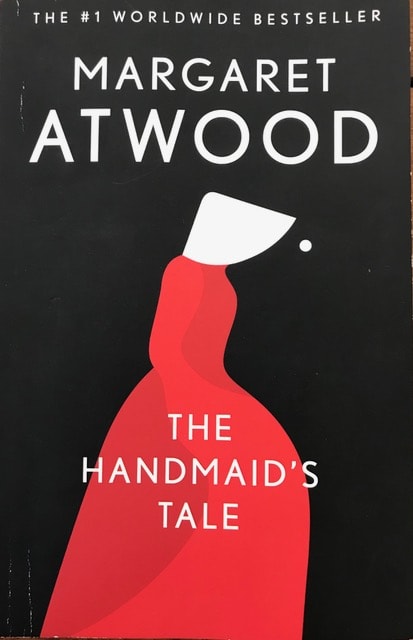The Handmaid’s Tale
Author: Margaret Atwood
Margaret Atwood wrote The Handmaid’s Tale over 30 years ago, and it has been a number one worldwide bestseller. It is a bestseller at Barnes and Noble with four stars and is rated four stars on Goodreads. So, just the fact that it has remained popular all this time (popular enough to have been made into a recent miniseries on Hulu) says something. I had read the book some years ago, but since I didn’t see the Hulu miniseries and I knew Atwood had just released a sequel, The Testaments, I wanted to re-read the book.
I remembered it as a thought-provoking, dystopian novel. Dystopia, the opposite of utopia, generally means “bad place” – a fictional setting that is, at least, undesirable, often totalitarian, unjust, and even frightening. And that is certainly the case in this novel. Often, the point of a dystopian story is that it is far enough from what we would anticipate happening in our future but close enough to our own lives to be recognizable, so it can be a cautionary tale.
Gilead, the location for the story, is in what is now New England. The U.S. no longer exists, there is war being raged (why or with whom is not clear), and environmental degradation, along with other factors, is so severe that birthrates have declined and many men and women are even infertile. Resources are scarce, and those that are available are allocated first to leaders (commanders) and their families who can often get things, like alcohol, prohibited to the rest of society.
In Gilead, many rules are based on certain passages from the Bible, yet some common phrases that sound biblical are taken from places like The Communist Manifesto. Women are no longer allowed to read (that might encourage them to question their society and even to rebel) and must stay at home caring for their husbands and households or hold other limited, acceptable jobs that support the social order. Former liberals, educators, and any convicted of acts against Gilead are routinely put to death, and their bodies are put on public display on a wall.
Sounds pretty grim, doesn’t it? But Atwood’s main character, Offred, is the “us” in the story – a young, middle class mom who lived through the “old” order and is now captive in Gilead. She has been deemed fertile and is trained as a handmaid. As such, she must wear a long, shapeless red dress and a white, deep bonnet that limits her view and the view of her face by others. Offred chafes at the limitations of her current position yet occasionally sees some freedom in the anonymity and strict definition of her role because she has few personal obligations. Yet, she has one enormous societal obligation – to bear a child for the husband (commander) of the family where she is assigned.
Offred struggles with thoughts of escape, but she knows eyes are always watching, and she never knows who she can trust. She must suspect even the other handmaids she is partnered with for her walks to get groceries. Her situation at times seems desperate.
Because Offred’s ultimate fate is not completely clear, I was excited to hear that Atwood had written a sequel, which was recently released. For those of you who have not read The Handmaid’s Tale, I recommend it. For those who have not read it but have seen the Hulu drama, I recommend the book as well – they are not exactly alike. Happy reading!



